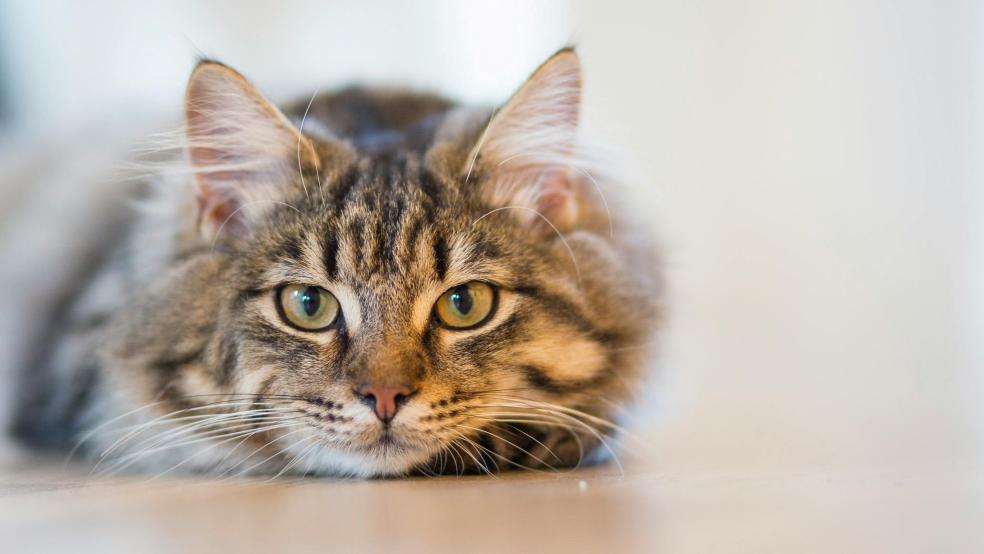
Cat health checks you can do at home
While regular visits to the veterinarian are crucial for comprehensive cat care, performing routine physical checks at home plays another important role in monitoring your pet's health. According to data from the Royal Veterinary College, the most commonly diagnosed illnesses in cats are almost completely preventable, with issues like, obesity, gum and dental disease, and overgrown nails among the most common conditions.
If you keep a close eye on your cat's physical health and behaviours, you can not only learn what's normal for your pet but can also spot any symptoms that are out of the ordinary, so you can get them booked in to see a vet as soon as possible. From examining their coat and skin to assessing their mobility and behaviour, here the experts from Catit share the health checks you can integrate into your routine.
Physical checks
These essential at-home physical checks will help you monitor the general health of your cat. It's a good idea to conduct these checks regularly, at least once each month, so why not set aside a little extra time during some of your grooming sessions to carry them out?
- Body condition: Assess your cat's body condition by feeling for their ribs and spine to ensure they maintain a healthy weight. Consult your vet if you notice any unexplained signs of weight loss or gain.
- Coat and skin: Make sure your cat's coat is maintained with regular grooming sessions and call your vet if your cat is moulting, scratching, or licking more than normal, or if their coat changes colour. Once a month, check for any signs of fleas, ticks, lumps, or bumps, as well as any redness, irritation, or abnormalities in the skin.
- Paws: Gently lift your cat's feet and check their pads for any pebbles or splinters if they go outside. Keep an eye on the length of your cat's claws and consider clipping them if they get too long. Providing a cat scratcher can also help keep their claws short and in good condition.
- Ears: Check that your cat's ears are clean and free of any excessive wax buildup, discharge, redness, or irritation. Be gentle around your cat's ears — only inspect visually and never insert anything into their ears.
- Nose: Make sure your cat's nose is soft, slightly damp, and clean. You should also check for any signs of coughing or sneezing as this could be cat flu.
- Eyes: Ensure their eyes are clear, bright, and free from discharge. Look for any redness, swelling, or cloudiness, and watch out for excessive tearing or squinting.
- Mouth and teeth: Carefully lift your cat's lips to inspect their gums and teeth. Look for signs of inflammation, redness, or bleeding gums, broken teeth, or unusual discolouration.
Behavioural checks
Alongside physical checks, you should also keep an eye on your cat's behaviour and watch out for any significant changes that are out of character for your pet.
- Mobility: Observe your cat's gait and movement for any signs of lameness, stiffness, or difficulty walking.
- Breathing: Monitor your cat's breathing for any signs of laboured breathing, wheezing, or coughing. Book them in to see a vet if you notice any unusual sounds or changes in breathing patterns.
- Appetite and thirst: Observe your cat's eating and drinking habits for any changes. Ensure your cat has a healthy appetite and maintains normal hydration levels and watch for any signs of increased or decreased thirst. If your cat doesn't drink much, you may want to invest in a water fountain. These provide your cat with a constant supply of fresh, clean water and can encourage them to drink more. Hydrating treats and food toppers can also help up your cat's water intake.
- Sociability: Pay attention to your cat's general mood and sociability. Look for any changes in the ways they interact with family members and other cats and monitor for signs of aggression or unusual hiding behaviours.
- Energy: Keep an eye on your cat's energy levels and call a vet if your pet is uncharacteristically fatigued with no explicable cause.
- Litter box behaviour: Get to know your cat's usual litter box habits and call your vet if you notice any unusual behaviours such as infrequent or more frequent urination, discomfort when using the litter box, or refusal to use the litter box. It's worth noting that dietary changes can impact your cat's litter box habits.
When to call a vet
As a general rule of thumb, if you notice anything out of the ordinary, it's best to err on the side of caution and get your cat checked over by a vet — especially if they are struggling to eat or use the litter box. Some cats, such as those with underlying health conditions, kittens, and older cats, may also be more vulnerable to illness, so it's important to keep an even closer eye on their health and call your vet if they're struggling with symptoms.
Paul Trott, UK Marketing Manager at Catit says:
"Monitoring your cat's weight, behaviour, and general health can afford peace of mind that your cat is healthy and ensures any issues can be detected early. It's also a great excuse for some quality bonding time with your feline companion!
"Take some time during your regular grooming sessions to give them a little MOT and keep an eye on their behaviour if you suspect anything is wrong. A cat camera can be useful for checking in on your cat while you're away from home so you can see what they're up to, how much they're eating, how they're playing, and how they're feeling throughout the day."







